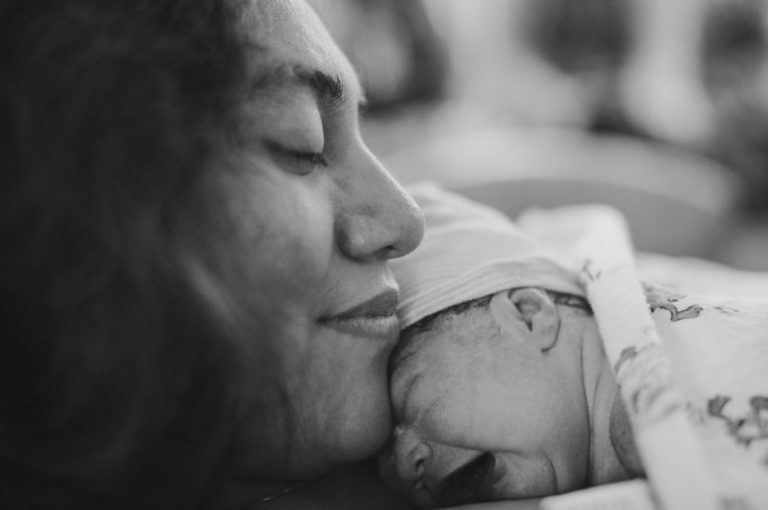This article gives an overview of a typical normal birth. It tells you what to expect and how to optimise your chances of having a normal birth.
The unknown can be very daunting – being in an unfamiliar environment, having procedures done for the first time, not knowing what to expect.
In New Zealand, you will see your Lead Maternity Carer (LMC) through your pregnancy, when you will be able to ask questions about the place in which you are plan giving birth and what to expect in labour. The following advice will therefore vary from individual to individual, but it will give you some general information about procedures surrounding the birth.
What does a typical normal birth look like?
On arrival
Throughout pregnancy your LMC has been checking your well-being and that of your baby. On arrival at the hospital or birth unit – or the midwife’s arrival at your home – your LMC will do an antenatal check that includes:
- feeling baby’s position and check that baby is head down,
- asking you about baby’s movements and listen to the heart beat,
- checking your blood pressure, pulse and temperature, and
- asking you how you have been feeling, and
- checking your urine.
Your labour so far
If you have not yet informed your midwife of ‘events’ so far she will ask about your contractions and how you are coping, whether you have passed a ‘show’ (also known as a mucus plug) or whether your waters have gone. At this stage you may revisit your birth plan to check you are both happy with how labour is proceeding.
Where are you now?
Often your LMC will recommend an internal vaginal examination, which will give you both a lot more information on how your labour is going – whether your cervix is softening and opening and it also confirms how far baby’s head has come down and baby’s position. This involves the midwife gently inserting 2 fingers into your vagina to feel the cervix and baby’s head. It usually takes 2-3 minutes; it is uncomfortable but does not hurt if you are able to relax. Your midwife will do the examination between contractions and do her best to make you feel at ease.
Options in a normal birth
As the first stage of labour progresses you may wish to have pain relief – your LMC will discuss your options with you. (For further information visit Pain Relief in Labour)
It is advisable to remain mobile and adopt upright positions, to enable gravity to assist your baby’s journey down the birth passage. Think of it as cycling down hill rather than up hill! Standing, kneeling or squatting lessen the effort of the contractions and usually feel more comfortable for the mother anyway! The first stage of labour can be anywhere between 4-16 hours long, so it will be necessary to change positions regularly.
As you enter the transition between the first and second stage of labour (your cervix is fully open and baby is starting to move down your vagina) the contractions feel more intense and a pushy sensation gets stronger and stronger – as though you need to move your bowels. This is baby moving down and if the midwife is unsure she will ask to examine you internally again, to check whether your cervix is fully open.
Transitional stage of labour
Many women feel quite frightened at this stage, as the overwhelming urge to push gets stronger and stronger; some feel relieved and welcome the ability to do something to help labour along. At this time your waters may break – if they have not already. You will feel a warm gush of fluid, followed by a leaking sensation with contractions thereafter.
Normal birth delivery
Most first time mums push for around one hour to birth their baby; for subsequent births it can be as little as a few minutes. During this time your LMC and birth partners will be supporting you and encouraging your pushes as gradually the baby’s head becomes visible.
As the head stretches the skin around the vaginal opening you will feel a burning/ stinging sensation and at this time the urge to push is overwhelming. Your midwife will encourage you to slow your pushing – possibly to pant – to allow baby to be born gently.
The head may be born over several contractions and once the head is born the midwife will usually feel around baby’s neck to check whether the cord is wrapped around it (if necessary she will loop the cord over baby’s head). On the next contraction the baby turns around ¼ circle inside you and the shoulders and body are born over a minute or so.
Your new baby will be passed straight to you and placed on your abdomen to be loved, dried and checked over. Most babies cry within 1-2 minutes of the birth. You will be encouraged to feed your baby as soon as possible – babies are very alert when new born and their energy levels need replenishing, so this is an ideal time to introduce feeding to the baby.
Meanwhile your midwife will be preparing for the afterbirth – you may or may not have had an injection to assist this process.
(For more information see Labour – the three stages)
The afterbirth
The afterbirth can come within a few minutes, or may take up to one hour if you are having a drug-free third stage of labour. This feels soft and full – similar to the birth of the body – not hard and painful like the birth of the head.
Once your placenta and membranes (afterbirth) are safely delivered your LMC will examine your vagina and perineum to see whether stitches are necessary. These can usually be done immediately, after a local anaesthetic injection. You will then be offered refreshments and a shower and your baby will receive a head to toe check and be weighed and may also be looking for more food too!! It is time to cuddle in together and rest and enjoy your new baby.
The above is a general outline of a straightforward, normal birth – there are many variations on procedures and advice. Your care will be individualised according to your needs and wishes.
Helpful Birthing Websites
www.tabs.org.nz/birthplans.htm
This web link gives a comprehensive guide to formulating a birth plan







Loved reading this! very helpful and encouraging info in here! thanks! x